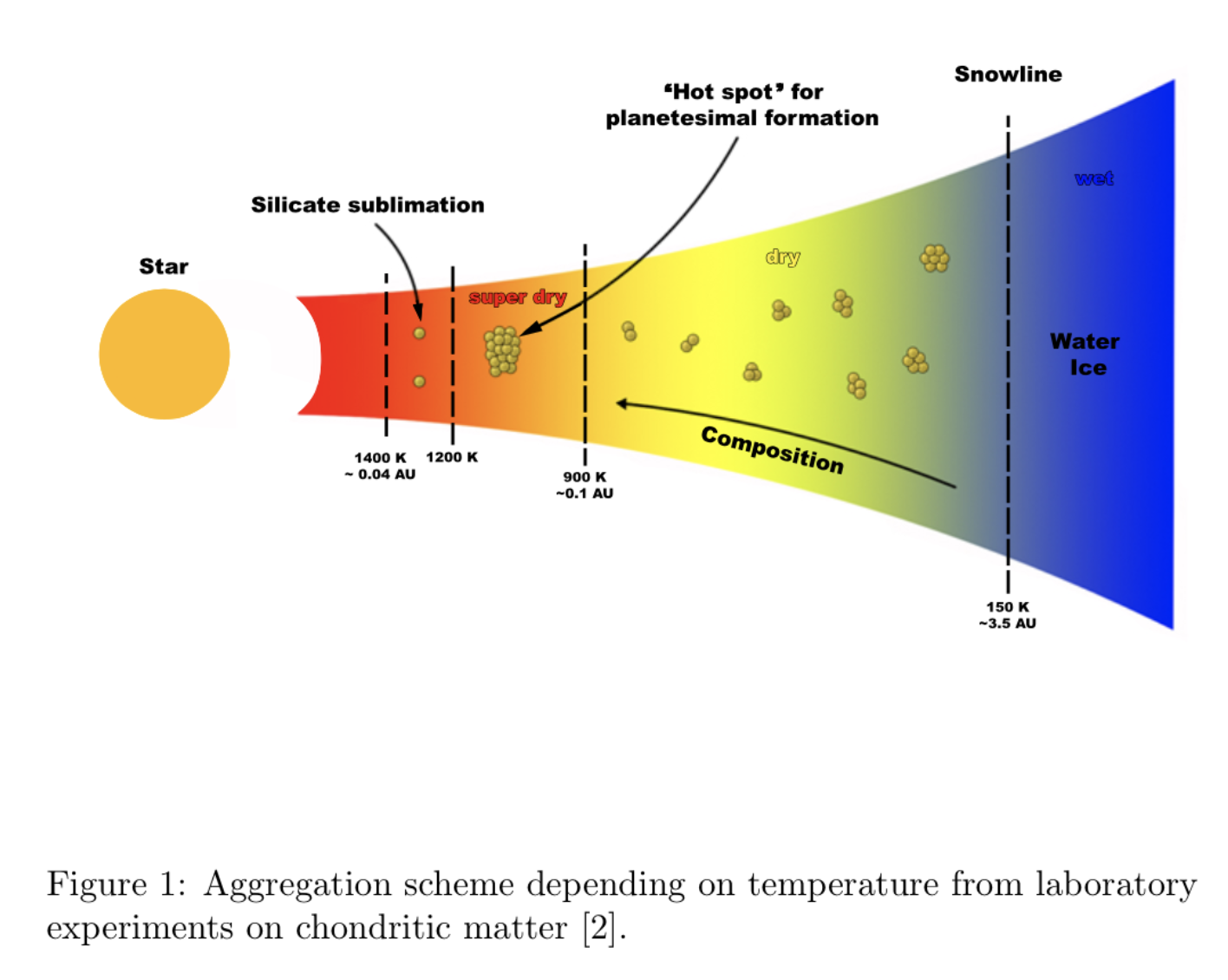Influence of Early Formation Steps on Inner Planetary System Architecture and Composition: High-temperature dust boosts planetesimal formation
- 1University of Duisburg-Essen, Faculty of Physics, Lotharstr. 1, 47057 Duisburg, Germany (tabea.bogdan@uni-due.de)
- 2University of Duisburg-Essen and Center for Nanointegration Duisburg-Essen (CENIDE), Faculty of Physics, Lotharstr. 1, 47057 Duisburg, Germany
Sticking properties play an important role in the early phase of planet formation. In the protoplanetary disc, grains drift towards the star, being exposed to increasingly higher temperatures. Tensile strength measurements by means of the Brazilian test along with results from Mössbauer spectroscopy suggest that there is a spacial region that favours planetesimal formation between 900 K and 1300 K [1,2].
For the Brazilian test pieces of two meteorites, namely Sayh al Uhaymir 001 and Allende, were milled to micrometer dust, pressed into cylinders, and tempered at increasing temperatures up to 1400 K before the tensile strength measurement. The Sayh al Uhaymir is an L4/5 type chondrite that has undergone a slight thermal metamorphosis. The Allende however is classified as CV3. It is unequilibrated and therefore the closest to a realistic mix of minerals in the protoplanetary disc. Comparing sticking properties in terms of surface energies in relation to the heating temperature of the two different meteorite samples, they show no significant difference for heating under vacuum. Both datasets show a considerable increase in sticking around 1200 K by orders of magnitude. The new Allende data fits the older Sayh al Uhaymir data in this respect. This confirms the former found location in the warm inner disc that supports planetesimal formation best.
The most abundant element in protoplanetary discs is gaseous hydrogen. To see how the presence of hydrogen might influence the results, we followed the same measurement procedure but tempering in a continuous hydrogen atmosphere. The heating chamber is flushed with hydrogen during the entire heating process. This also does not produce any significant change in the results. The relative surface energies still increase monotonously and rise by orders of magnitude around 1200 K.
We see an influence of composition and atmosphere as well as water content, grain size and morphology on sticking properties. Overall, also our new results not only suggest subtle changes but imply a boost in surface energy for high-temperature dust. This continues to support the idea of a hot spot around 1200 K that favours aggregation and might trigger a high number of planetesimals and subsequently planets in the inner part of protoplanetary discs [in prep].

[1] Bogdan, T., Pillich, C., Landers, J., Wende, H., & Wurm, G. (2020). Drifting inwards in protoplanetary discs I: Sticking of chondritic dust at increasing temperatures. Astronomy & Astrophysics, 638, A151.
[2] Pillich, C., Bogdan, T., Landers, J., Wurm, G. & Wende, H., (2021). Drifting inwards in protoplanetary discs II: The influence of water on sticking properties at increasing temperatures. Astronomy & Astrophysics, 652, A106.
How to cite: Bogdan, T., Pillich, C., Landers, J., Wende, H., and Wurm, G.: Influence of Early Formation Steps on Inner Planetary System Architecture and Composition: High-temperature dust boosts planetesimal formation, Europlanet Science Congress 2022, Granada, Spain, 18–23 Sep 2022, EPSC2022-235, https://doi.org/10.5194/epsc2022-235, 2022.

